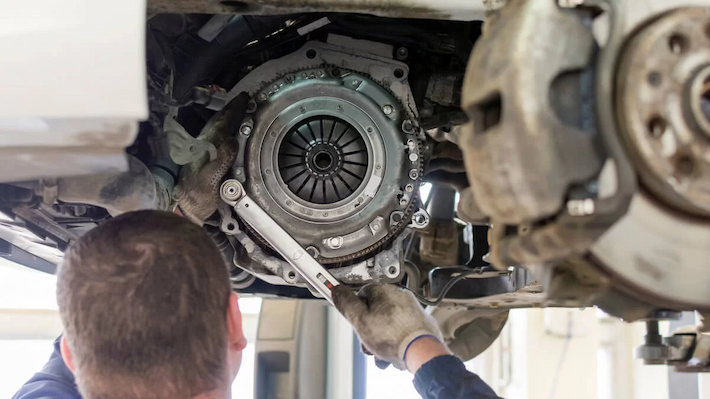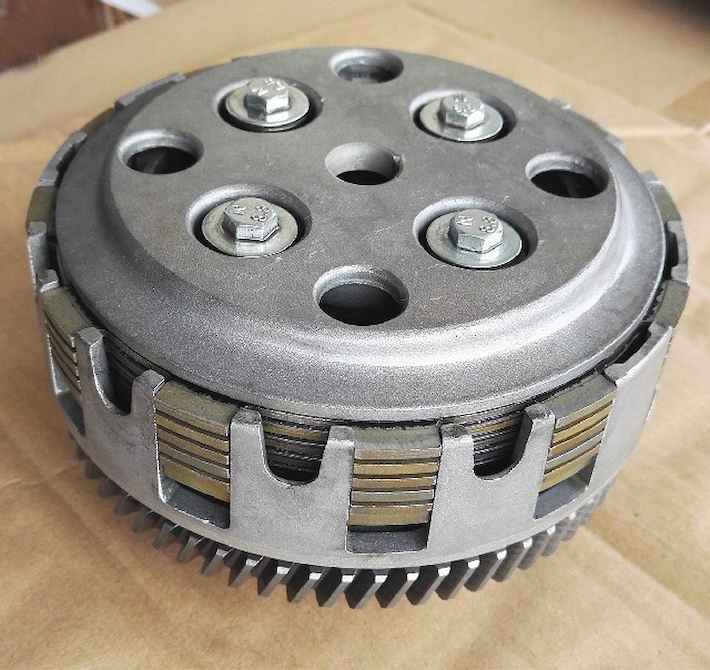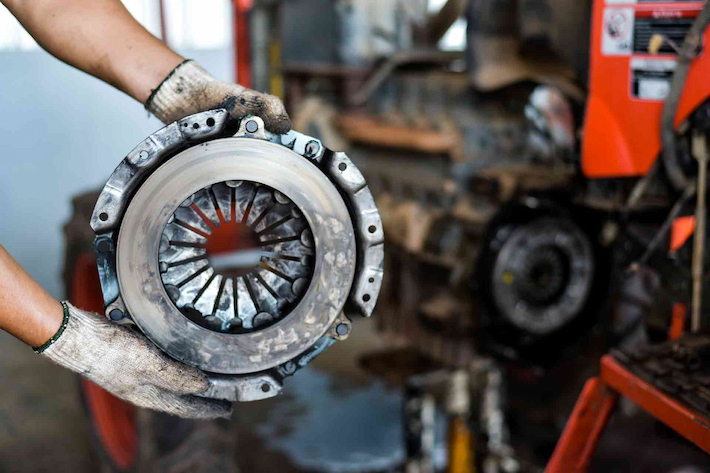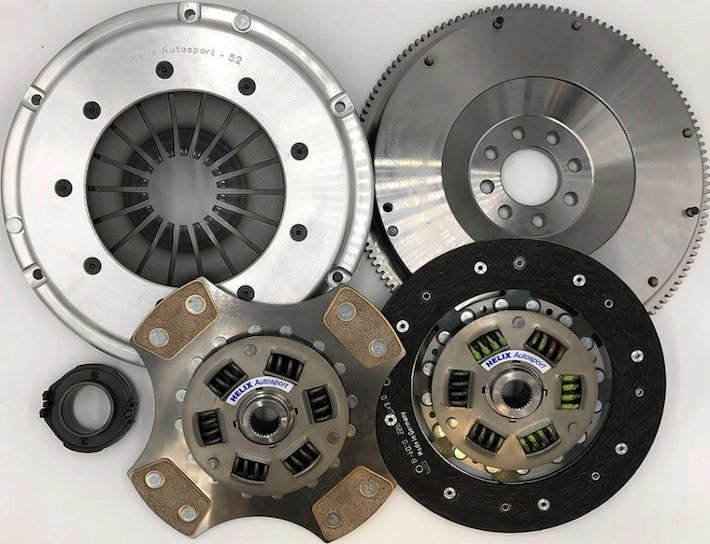Let’s be honest: although 95% of the new cars and trucks currently sold in Australia are equipped with automatic transmissions, most hardcore 4X4 owners and off-roaders would agree that there’s simply no substitute for a heavy-duty manual transmission. And with as many as 30% of all vehicles currently registered for road use boasting manual transmissions, they’re a long way from being rendered obsolete.
The fact is, a lot of people prefer the feel, predictability, and simplicity of the clutch assemblies that are used with manual transmissions. This is especially true for off-road and competition driving, where both throttle response and engine braking are an essential part of maintaining control.
The brutish durability of these assemblies may be legendary, but they’re not immune to wear, though. In particular, excessive wearing away of the friction material on the mechanical clutch plate that links the engine to the drivetrain can make it impossible to engage the transmission. Fortunately, Australia has its own core of aftermarket clutch plate manufacturers, and they know what it takes to build clutch assemblies that can hold up to driving down under.
Durable Replacement Clutch Plates and Components That are Built to Last
Make no mistake: the reliability of the single-plate mechanical clutch in automobile transmissions is the key to manual transmission durability. In fact, depending on how aggressive a person’s driving style is, the type of terrain they commonly drive, and how much weight they typically carry, factory clutch plates can faithfully deliver 70,000 – 80,000km of reliable service before needing replacement.

That doesn’t mean they don’t require vigilance in the interim to stay in top condition though, or that a big bump in engine output wouldn’t make it necessary to install a tougher clutch sooner. It does mean that it’s important to be familiar with the two most frequently used types of clutches used in car and truck transmissions before the change becomes inevitable, and they are:
- Full face. These 360° clutch plates are the ones most commonly found in OE or replacement use. They feature friction material around the full circumference of the plate, which allows for the smoothest engagement under most driving conditions. Plate hubs usually contain torsion springs, and they regulate the amount of clamping pressure the clutch requires.
- Segmented/paddle face. Normally known as 4- or 6-puck clutches, these clutch plates feature less friction material around their circumferences. The absence of material, however, while decreasing overall drivability, creates a lighter rotating assembly that’s able to withstand more forceful clutch engagements. This makes them great for torquier, more powerful engines.
In spite of their sturdiness, a mechanical clutch plate is still only as good as the rest of the clutch plate assembly. That’s why it’s so important when you’re looking to buy a car clutch plate, that you consider the role of all components in the assembly, and how simplicity demands even greater durability.
Clutch Assemblies are the Key to Reliable Power
Although the car clutch plate absorbs the most wear out of a manual drivetrain, the complete clutch plate assembly consists of three additional components, which are:

- The flywheel. The flywheel is attached to, and rotates with the engine crankshaft, and provides the mounting surface for both the clutch plate and its retainer, the pressure plate.
- The pressure plate. The pressure plate contains a built-in friction ring that clamps the clutch plate against flywheel, and a multi-fingered diaphragm spring that engages or disengages the clutch plate from the transmission.
- The release bearing. Sometimes called the throwout bearing, is a sealed assembly that’s held in place by a fork bolted to the transmission bell housing, and provides the contact surface for the clutch plate to be engaged or disengaged from the transmission.
When assembled, these simple automotive clutch assemblies are the key to reliable power delivery. Unlike automatic transmissions, manual car clutches provide a direct mechanical connection between the engine and transmission that doesn’t contain any electronics that can malfunction or fluids that can leak or become contaminated. Once the signs of clutch assembly wear start to occur though, they’re too crucial to ignore.
Telltale Signs of Impending Clutch Replacement
Believe it or not, it’s the stoutness of manual automobile clutch assembles that makes their problems the easiest to diagnose. Needing to rev the engine increasingly higher to reach a certain speed, especially when towing or climbing hills, are among the early indications that clutch assembly components are starting to wear. Fortunately, with only four dry components making up the entire auto clutch assembly, there’s nothing to mask or disguise the most immediate signs of excessive wear.

- You’ll feel it. If the clutch pedal becomes spongy, requires lifting up almost all the way to engage, or is slow or difficult to engage, the clutch plate or release bearing has worn out.
- You’ll hear it. A persistent, rumbling or chattering noise from the clutch assembly that grows markedly louder when the clutch pedal is released is also an indication that the clutch plate or release bearing is nearing the end of life.
- You’ll smell it. The smell of friction created by a worn or slipping clutch plate is unmistakable, and it’ll become notably prominent whenever the clutch pedal is pressed.
With the possible exception of the flywheel, no part of a clutch assembly is going to last the lifetime of a vehicle. All the components will wear eventually, which is why it’s so critical not to allow simple fixes to escalate into larger problems that could damage the engine or transmission. Clutch plates will wear the quickest, but you want to promptly replace any clutch assembly components when the signs of wear appear.
Different Clutch Plates Made for Different Types of Driving
From the high-friction automotive clutches used in everyday cars and trucks, to the extreme slippage clutches used in high-performance vehicles, you can find aftermarket replacement clutch plates and clutch assemblies for almost every manual transmission vehicle sold in Australia since 1960.

The range of face materials used in aftermarket auto clutches is just as extensive as the range of possible driving applications. And from OE tolerance and specification clutches used in daily driven automobiles, to the severe duty clutches for cars and trucks driven in competition, the list of possible friction materials can include:
- Organic. Organic clutch faces are made from phenolic resins and friction modifiers, and are among the most common replacement automobile clutches because of their excellent, all-around combination of smooth engagement and wear resistance.
- Ceramic. Ceramic clutch faces consist of various mixtures of copper, iron, silicon dioxide, and graphite that are sintered, and then riveted onto the clutch plate, and are typically preferred for high-temperature environments where repeated clutch engagement is common.
- Kevlar®. These heavy-duty car clutches for sale are preferred for their long-lasting, smooth engaging qualities, and are ideal for low slippage clutch control driving like off-roading, or light to moderate towing.
- Carbon fibre. Carbon fibre clutches share Kevlar’s smooth engagement and low slippage characteristics, while also boasting the noticeably higher temperature resistance that’s required for track racing and endurance driving.
- Feramic. Feramic clutches are similar in composition to ceramic clutches, but their extreme holding power makes them almost exclusive for quick-release applications like pulling and drag racing where slippage is needed.
As a minimum, the release bearing should always be replaced together with the clutch plate; however, replacement kits are typically sold containing all four components. Even the flywheel and pressure plate can become warped if the clutch plate is allowed to wear down too deeply, making replacing the complete assembly with all new components a smart move to protect the entire drivetrain.
The Final Word
At the end of the day, when it comes to cost, performance, and reliability, a sturdy manual transmission is hard to beat. And ensuring that your clutch assembly is suited for your type of driving is all that’s needed to get the full potential out of it.
Everything starts with the clutch plate though, that’s why when it comes to maintaining and replacing the clutch in automobile transmissions, you know you can trust durable, Australian-made clutch assembly parts to help you get the most reliable, enjoyable service from your manual.



